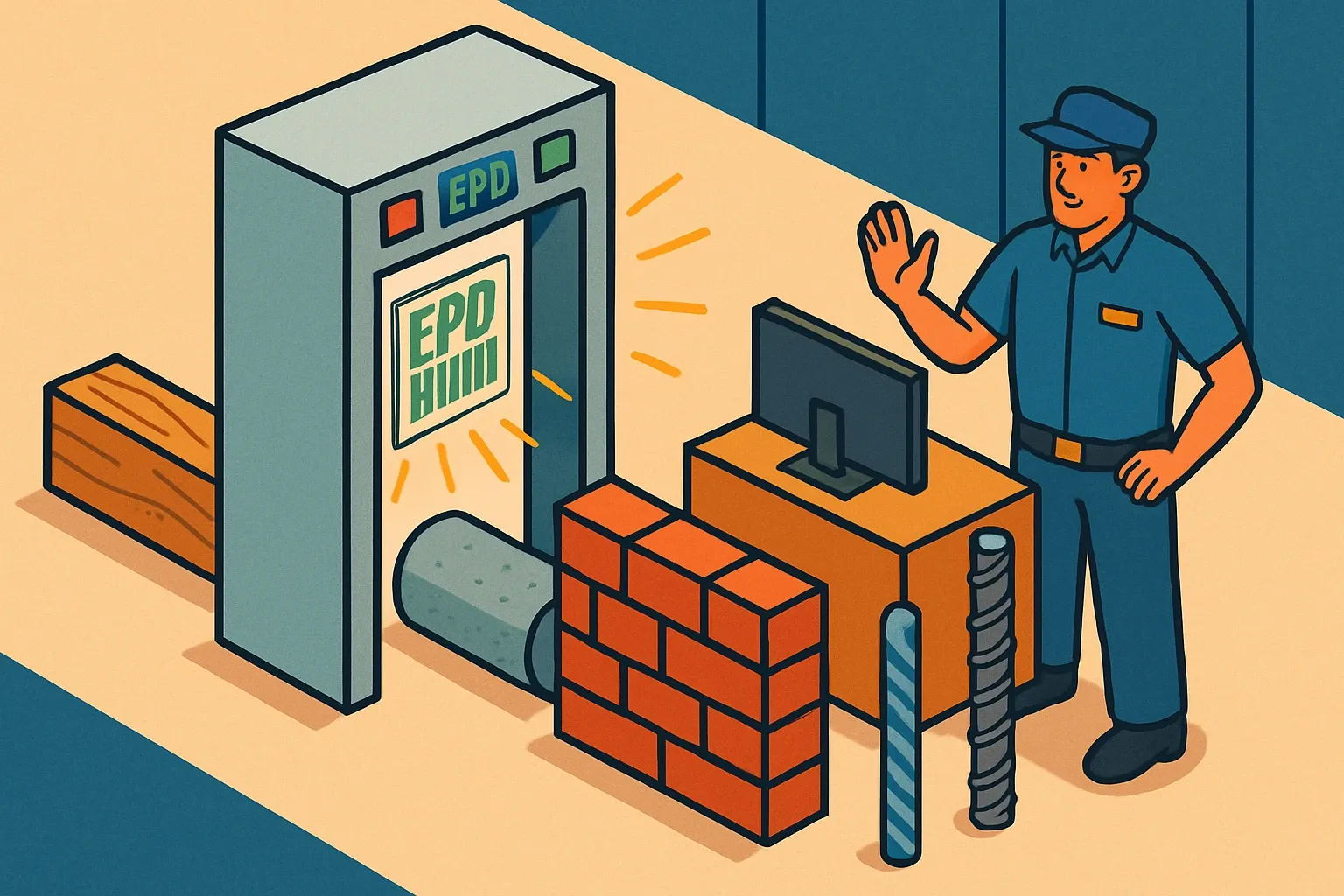EPD-or-Else: Data Centers Rewrite Supplier Rules
Hyperscale operators once obsessed over kilowatts. Now they care just as much about kilograms of CO₂. If your concrete, steel, cable trays, or switchgear lack a verified Environmental Product Declaration, don’t expect an invitation to the next megawatt party. Here’s why the procurement portals at AWS, Google, and Microsoft are turning into digital metal detectors that beep for missing EPDs—and how manufacturers can still make it past security.


Hyperscalers Just Flipped the Transparency Switch
Northern Virginia alone has more than 5 GW of hyperscale capacity under construction or in planning (JLL, 2025). The concrete and steel orders behind that number come with a new checkbox: upload EPD. Fail it and your bid never reaches human eyes. There is enough signals already from project managers who reject submittals that arrive without the PDF.
Embodied Carbon Became the Bottleneck
Operational energy keeps trending cleaner thanks to renewables. That leaves embodied carbon—from materials and MEP equipment—responsible for up to 69 % of a data center’s lifetime footprint (DataCenterDynamics, 2025). No hyperscaler wants a Scope 3 PR nightmare etched into foundations that will stand 30 years.
The Open Letter Heard Round the Cloud
In September 2024, the iMasons Climate Accord published a public call urging every supplier to produce third-party EPDs; it was signed by AWS, Google, Meta, and Microsoft (ConcreteProducts, 2024). The Accord now counts more than 250 member companies, giving that letter real teeth (iMasons, 2025).
How Procurement Screens Your Bid
- Automated portal check confirms a Type III, EN 15804-compliant EPD.
- Machine reads the Global Warming Potential figure and compares it to internal benchmarks set per campus.
- Sustainability team reviews underlying LCA data for red flags—out-of-date energy mixes or missing end-of-life modeling.
If any step fails, purchasing moves to the next vendor in minutes, not weeks.
Three Missteps That Will Get You Ghosted
- Submitting a generic industry EPD instead of a product-specific one.
- Using a PCR that expired last quarter, making reviewers question comparability.
- Sending a draft “for info only”; hyperscalers want fully verified documents, not promises.
Fast-Track Your Transparency Playbook
Start data capture early, pick the same PCR your competitors use, and lock in third-party verification before the RFQ drops. The cost of an EPD pales beside a single lost campus pour. Get your numbers on paper and the gate swings open.
Frequently Asked Questions
Do hyperscaler data centers now require product-specific EPDs for concrete and steel?
Yes. Following the iMasons Climate Accord open letter, major operators such as AWS, Google and Microsoft instruct contractors to provide third-party verified, product-specific EPDs at bid stage. Generic or industry-average EPDs risk rejection (ConcreteProducts, 2024).
Will a program operator’s PCR expiration date invalidate my existing EPD?
No. An EPD remains valid until its own five-year term ends. On renewal you must update to the latest PCR, but procurement teams will accept the current document as long as it is still inside its validity window (EN 15804, 2024).
Do data center buyers care about older EPD publication dates?
They mainly check that the EPD is within its validity period and aligns with their preferred PCR. Age inside that window rarely affects selection unless the document is about to expire within a few months.
Is it enough to provide an unverified LCA report instead of a full EPD?
No. Hyperscaler portals automatically flag unverified LCAs. Only a verified Type III EPD clears the compliance filter.
How quickly can a manufacturer typicaly publish a product-specific EPD for data center procurement?
Timelines range from six to nine months if plant data are organized; a streamlined data-collection partner can cut that to roughly 12 weeks in many cases.
Do U.S. suppliers need to align with EU Energy Efficiency Directive rules?
Not legally, but hyperscale operators reuse global RFP templates, so complying with EED-style embodied carbon reporting avoids losing bids in any region.
